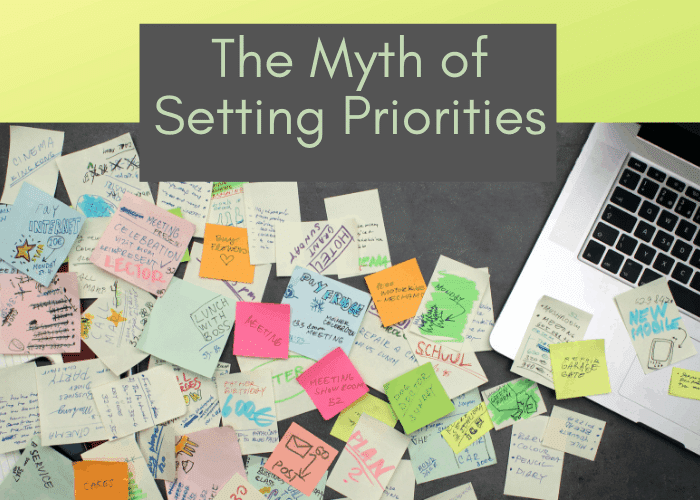
The Myth of Setting Priorities
One of the most frequent requests we get from executive directors, managers, and employees is to help them set priorities. The request, on the surface, is logical. Somehow, if we just all knew, and agreed to priorities, it would solve the not-enough-time-in- the-day problem. However, as you know, the prioritization exercise is never as easy as it seems. First, it’s nearly impossible to prioritize unless there is unequivocal clarity about organizational values, focus, and metrics of success.
Priority setting typically defaults to time management techniques like Steven Covey’s urgent and important matrix, or, my least favorite, the numbered list. Did that long list every make you feel less stressed even though there was indeed a number 1? The list only works if you draw a line after number 3 or 4 and cross out 5–20! Priority setting says you still have tons of things to do… by definition, the ones on the bottom of the list are likely not going to get done, or if you are like me, they move from one week’s list to the next until I just stop putting it on my list (guess it wasn’t a priority after all!)
Refine your imperatives
Instead of priority setting, we suggest refining your imperatives—weekly, monthly, yearly. By definition, imperative means it is essential — if you don’t do it, nothing else matters. Also, by definition, everything can’t be an imperative (if it is, the issue isn’t priority setting it’s a disconnect between the job to be done and capacity). Forget priorities, define your imperatives.
Let me give you an example. One of my priorities is to keep up with the current literature in my field. The latest copies of Harvard Business Review, Stanford Social Innovation and Chronicle of Philanthropy live in my briefcase. Reading the current literature is necessary if I am going to do quality work and remain relevant, but it is not an imperative. An imperative is that I have satisfied clients (i.e. I deliver products and services that have a positive impact on their organizations and always over-deliver, on time and to budget.) Here is the difference. If I don’t have satisfied clients, even if I am well read, I go out of business and nothing else matters! It is an imperative… everything else depends on it!
The myth of priority setting is that if you put one task in front of another, you will be better able to manage your workload. In my experience, prioritization doesn’t work and is in fact, a waste of time. Instead define your 2, 3, or 4 imperatives and build your work life around them. Imperatives are the key to focus. Build your work life around imperatives and the other things simply become less important.

